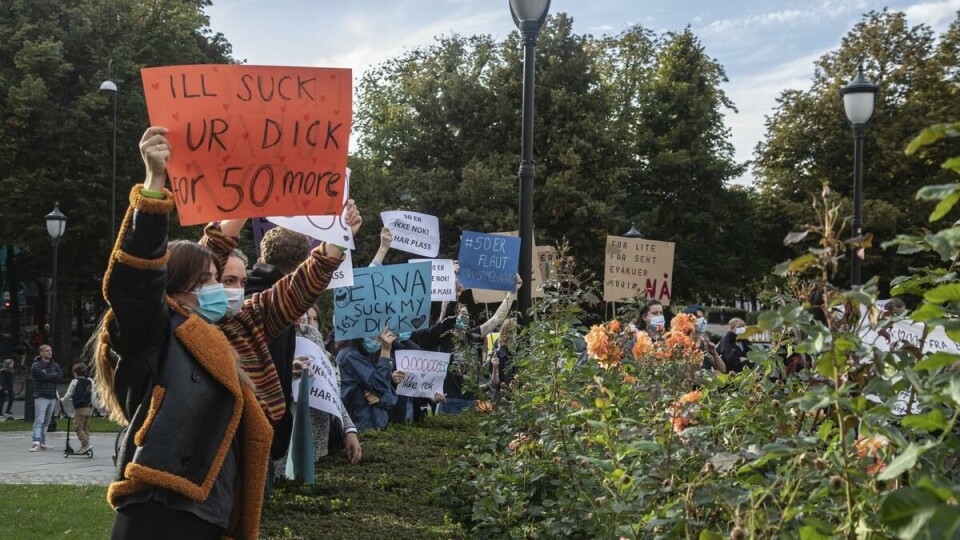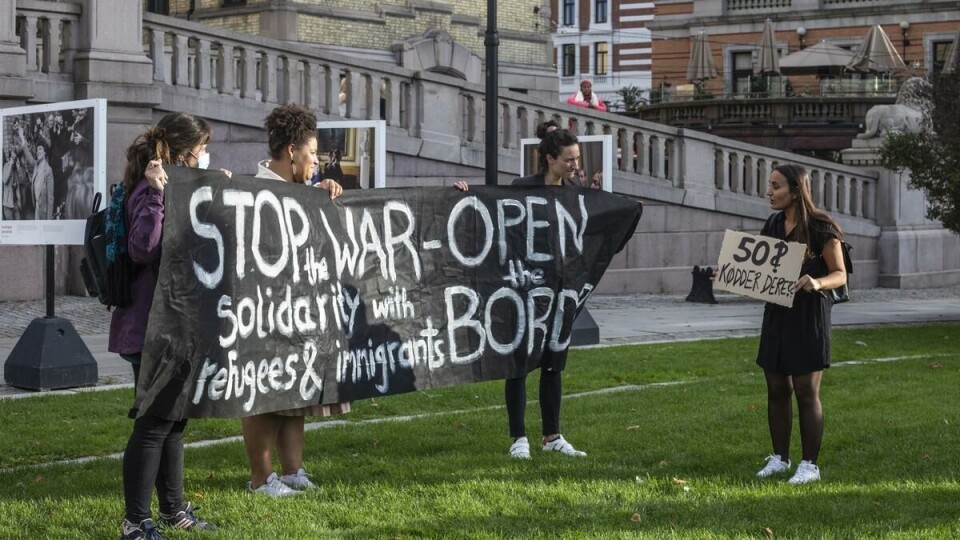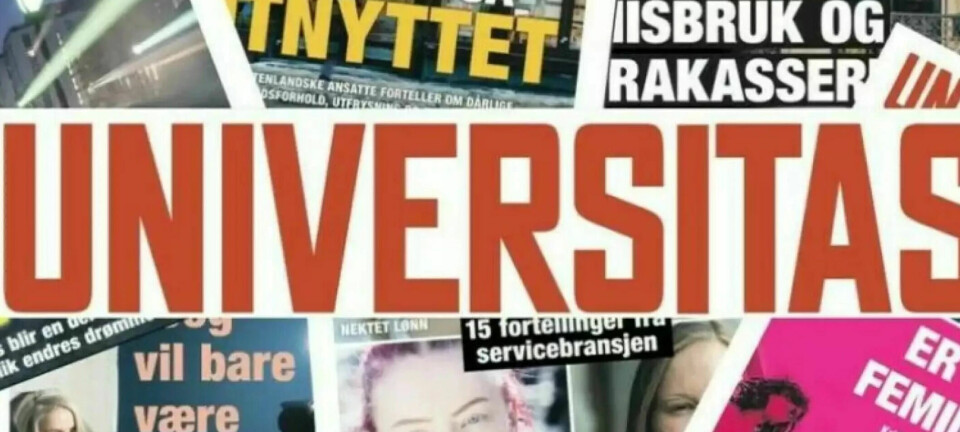
Norwegians gather to protest on behalf of refugees in Moria
Recently, the Moria camp in Greece was set ablaze. The Moria camp is a place “where the vulnerable have become more vulnerable” as expressed by one of the speakers of the event, Sidsel Aas.
This is an opportunity for Norway to be a leading example for other European countries, by allowing for as many refugees as the municipalities say they can receive
Maria Refsland
Imagine yourself in their situation, show some empathy and understanding
anonymous protester
I invite more than 50 people to parties in my 60m2 apartment
Maria Refsland, among the organisers of the protest
European countries are actively contributing in the wars that have destroyed the countries that these people are fleeing from
Hena Harsou, organiser and speaker at the protest
On the 14th of September, many dozens of Norwegians gathered to denounce the government’s decision to evacuate only 50 refugees from the refugee camp Moria after the recent fires which threatened the lives of 12,000 people.
Luckily, nobody was killed in the fire. However, the unsafe conditions have left many refugees without shelter and sanitary condition.
One of the organisers of the protests, Aridane Marketou, explained how they had planned on holding such an event earlier, but had to postpone due to the Corona pandemic. After the fires in Moria, they decided to go through with the protest in hopes of pressuring the government to accept more than 50 people from the camp.

— I don’t think it’s acceptable to only take in 50. Norway is a rich country with a better economy than most European countries, says Aridane Marketou.
— A ridiculously low number
Maria Refsland is among the organisers of the event. She walks around and makes sure that there is enough hand sanitiser for the participants and agrees fully that 50 people are not enough.
— 50 is reprehensible. I invite more than 50 people to parties in my 60m2 apartment. This is a ridiculously low number of people and its nauseating, Refsland says.
— This is an extremely low amount, especially since multiple municipalities do want to receive refugees, explains Christina Barlinn Korvald, one of the protesters in front of the parliament.
Tromsø alone has offered to receive 50 refugees. Meanwhile, Oslo, Bergen and Trondheim, as well as over a hundred other municipalities across Norway have expressed willingness to receive refugees.
A recent poll done by Kantar on behalf of TV2 underlines this public opinion and shows that 59,2% of Norwegians agree that 50 is too low, whereas 12% think it’s a fitting number, and 23% believe the number to be too high.

Hena Harsou, an organiser and speaker of the event, points to the fact that the Norwegian government has participated in the wars that most of the refugees are fleeing from.
— European countries are actively contributing in the wars that have destroyed the countries that these people are fleeing from, Harsou says.
Want European cooperation
The protesters all agreed that Norway can do more, but there is also a desire for the other European countries to join efforts in evacuating refugees, not only from Moria alone but also elsewhere in Greece and Turkey.
— European countries are building walls and fences to keep the refugees out. They don’t want to stay in Greece, they want to live in other European countries, and every time they try to pass through they are met with closed borders, explains Hena Harsou.
— I think it should be more evenly spread across Europe, Aridane Marketou critiques that Greece has been left with sole responsibility to deal with the refugees in Europe.
The Norwegian government previously argued that Norway would only bring the refugees to Norway on the condition that 8 to 10 other European countries do the same. Many of the protesters agree that other European countries should help as well, but that it should not be a condition for Norway to bring refugees here.
— This is an opportunity for Norway to be a leading example for other European countries, by allowing for as many refugees as the municipalities say they can receive, Maria Refsland argues.
Only recently Olaf Scholz, the German Vice Chancellor announced on Twitter that Germany would allow for more than 1,500 refugees, a plan that has been further approved by Chancellor Angela Merkel.
An unstable future
Most of the refugees are either in Greek or Turkish camps. As tensions rise between the two countries in the search for natural resources in the Mediterranean, the refugees' future has become more uncertain.
— Greece is dealing horribly with this situation, they are actually imprisoning refugees and they are not processing the asylum applications and are using the virus as an excuse to make things harder for the refugees. They are also illegally sending refugees back to Turkey without even allowing them to seek asylum, critiques Aridane Marketou.
One of the protesters, Dilan Baycan, agrees with this sentiment cynically joking that
— Greece is sending their refugees to Turkey, and Turkey is sending their refugees to Greece.
Al Jazeera reports that Turkey’s president Erdogan is willing to meet with Greek officials to discuss the ongoing dispute over energy exploration in the mediterranean sea. The disagreements between the countries over oil and gas extraction may lead to further destabilisation in the region. A militarised conflict would make it even harder for both countries to properly deal with the refugees setting foot to Europe in the search for peace and security.
This text is a contribution to Inter Universitas from Hiwar Nheli, a recent graduate student at the department of media and communication (IMK) at the University of Oslo.

































